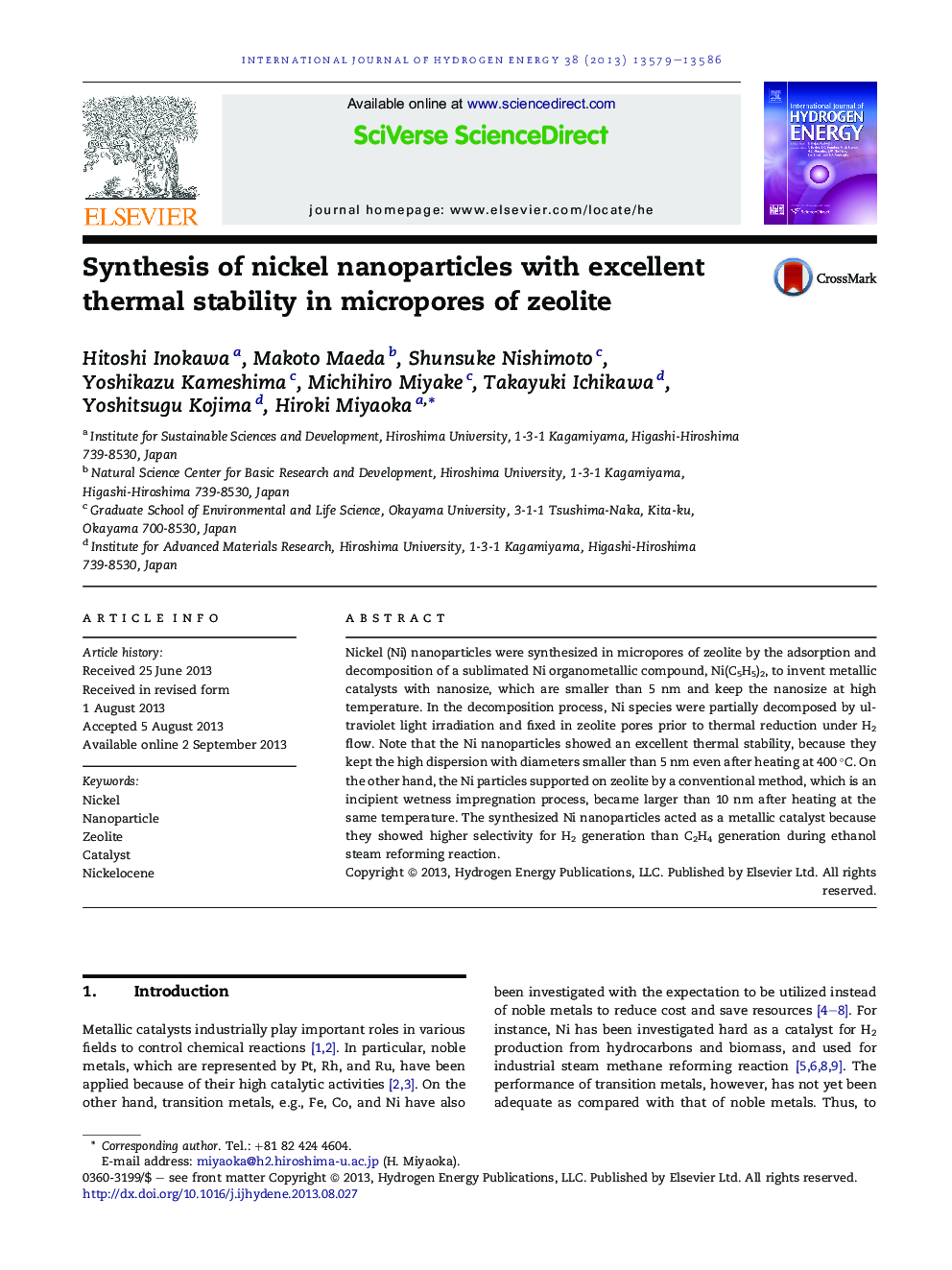| Article ID | Journal | Published Year | Pages | File Type |
|---|---|---|---|---|
| 7721110 | International Journal of Hydrogen Energy | 2013 | 8 Pages |
Abstract
Nickel (Ni) nanoparticles were synthesized in micropores of zeolite by the adsorption and decomposition of a sublimated Ni organometallic compound, Ni(C5H5)2, to invent metallic catalysts with nanosize, which are smaller than 5 nm and keep the nanosize at high temperature. In the decomposition process, Ni species were partially decomposed by ultraviolet light irradiation and fixed in zeolite pores prior to thermal reduction under H2 flow. Note that the Ni nanoparticles showed an excellent thermal stability, because they kept the high dispersion with diameters smaller than 5 nm even after heating at 400 °C. On the other hand, the Ni particles supported on zeolite by a conventional method, which is an incipient wetness impregnation process, became larger than 10 nm after heating at the same temperature. The synthesized Ni nanoparticles acted as a metallic catalyst because they showed higher selectivity for H2 generation than C2H4 generation during ethanol steam reforming reaction.
Related Topics
Physical Sciences and Engineering
Chemistry
Electrochemistry
Authors
Hitoshi Inokawa, Makoto Maeda, Shunsuke Nishimoto, Yoshikazu Kameshima, Michihiro Miyake, Takayuki Ichikawa, Yoshitsugu Kojima, Hiroki Miyaoka,
